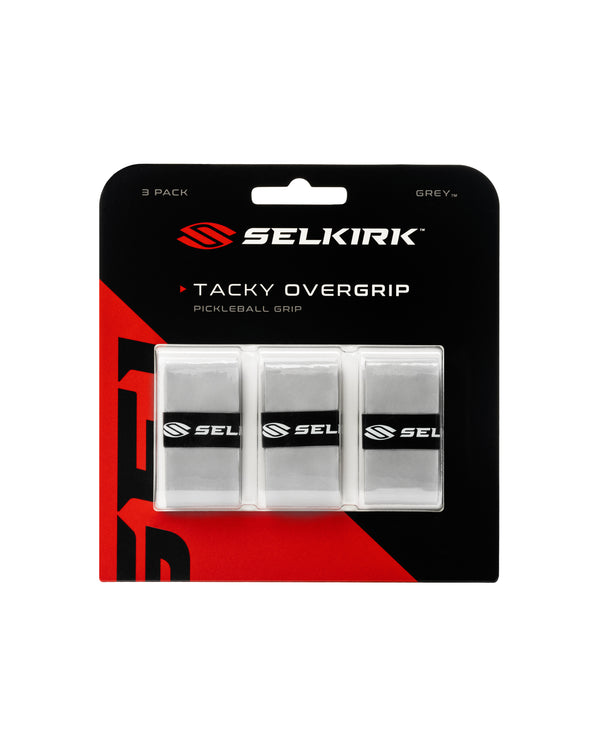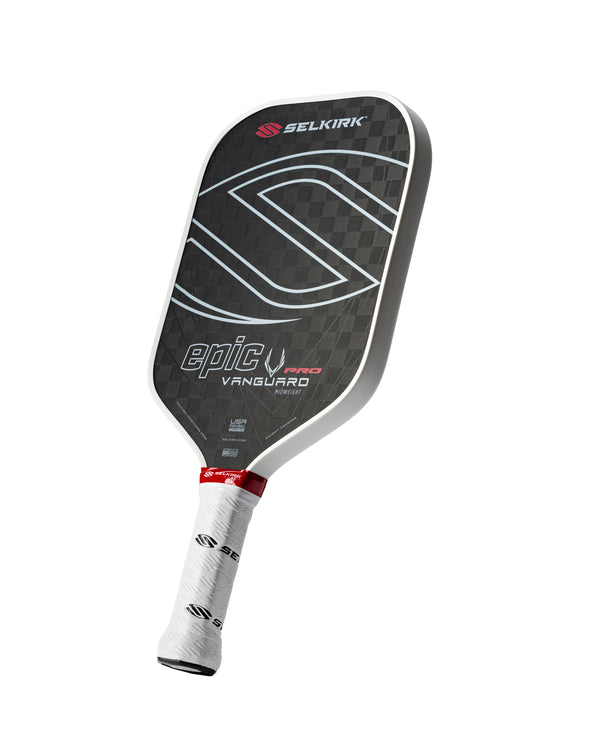As you progress in pickleball, you'll likely move beyond your starter paddle and consider investing in one that complements your game.
The most critical piece of equipment in pickleball is your paddle, and with so many options available, testing paddles before you buy is essential to ensure that the one you choose aligns with your skill level, playing style, and personal preferences.
In this guide, we’ll walk you through the key factors to consider when testing a pickleball paddle to help you make an informed decision.
How do you choose a pickleball paddle?
Pickleball paddles may look similar at first glance, but several factors set them apart, including size, weight, materials, and craftsmanship. Beyond these basics, there’s the grip size, grip shape, and even color options to think about, all of which can affect your gameplay.
As every player has a unique playing style, what works for one player may not work for another. Testing paddles allows you to discover which one suits your game best.
What is your skill level?
Pickleball paddles are often designed with specific skill levels in mind. Manufacturers create paddles for beginners, intermediates, and advanced players.
If you're just starting, a paddle with a shorter, wider surface and a large sweet spot will help you connect more easily with the ball and keep your shots controlled. As you progress to an intermediate or advanced level, you may want a paddle that supports more specialized aspects of your game, such as adding spin or boosting power for aggressive shots.
Advanced players might lean toward paddles designed to maximize precision or spin. Testing paddles that align with your current skill level can greatly enhance your performance and confidence on the court.
What is your style of play?
Every pickleball player has a distinct playing style and the right paddle should complement yours.
Are you a power hitter, also known as a "banger"? If so, you’ll want a paddle that maximizes your strength and adds power to your shots. Heavier, elongated paddles with a smaller sweet spot are generally favored by power players.
On the other hand, if your game revolves around control and finesse — often referred to as the "soft" game — you’ll likely benefit from a paddle that helps you manage ball placement and touch.
These paddles are usually shorter, wider, and designed to dampen the ball’s speed, allowing you to play more precise, controlled shots. When testing paddles, focus on finding the one that complements your play style to make every point count.
What kind of materials do you like?
Pickleball paddles are made from various materials, each affecting your gameplay in different ways. The most common core materials are polymer, Nomex, and aluminum.
Aluminum cores are lightweight and offer great control, while Nomex cores are harder, producing more power and pop. Polymer cores are versatile, offering a balance between control and power.
Additionally, paddle faces can be made from a number of materials, including graphite, fiberglass, or carbon fiber. Graphite paddles are light and offer control, while fiberglass paddles add a bit more power. Carbon fiber is often seen in high-end paddles, providing excellent touch and control. Testing paddles with different materials will help you understand how each impacts your shots.
Pro tip: Dive deeper into paddle construction with Selkirk’s detailed guide to learn how materials affect your play.
How heavy do you like your paddle?
Weight is a crucial consideration when choosing a pickleball paddle. Even though paddle weight typically ranges within a small margin between 7.3 to 8.3 ounces, the impact on your game can be substantial.
Heavier paddles provide more power, allowing you to drive the ball with greater force. However, they can also slow down your hand speed, which is essential for quick volleys and reaction shots.
Lighter paddles offer more control and allow for faster hand movements, making them ideal for players who rely on quick reflexes.
When testing paddles, assess how the weight affects your swing, hand speed, and ability to maneuver the paddle. If you prefer a lighter paddle but want more power, consider adding lead tape to adjust the balance.
Do you need extra reach?
If you find yourself just out of reach for balls in the kitchen or want more leverage on overhead smashes, an elongated paddle might be your best bet. Elongated paddles provide extra reach that can be especially beneficial in singles matches or for players with shorter arms.
However, elongated paddles often have a smaller sweet spot, which can lead to less forgiveness on off-center hits. For beginners or players who prioritize control, a shorter, wider paddle is typically a better choice because of the larger sweet spot and improved maneuverability.
Are you a singles or doubles specialist?
Your preferred format — whether you play singles, doubles, or both — can significantly influence which paddle is best for you.
Singles pickleball emphasizes power and long-range shots, so a longer, heavier paddle can help you hit powerful groundstrokes and passing shots.
On the other hand, doubles matches are mostly played at the kitchen line, where fast hands and control are critical. A shorter, wider paddle with a larger sweet spot can enhance your ability to make quick volleys and controlled dinks.
If you play both formats, you may want to test a variety of paddles to see which one offers the best balance for your playing style in each game.
Do you need a certain grip size?
The grip size of your paddle is another important consideration. A grip that’s too small can lead to over-gripping, which may cause wrist strain or even injury. Conversely, a grip that’s too large can limit your wrist action, reducing your ability to maneuver the paddle quickly.
Most paddles come with standard grip sizes, but you can always add overgrips to adjust the thickness.
Additionally, the grip shape matters. Some players prefer an oval, square, or octagonal grip shape for better hand positioning. The handle length is also something to consider, especially if you use a two-handed backhand, which may require a longer handle.
Testing different grip sizes and shapes will help you find the most comfortable fit.
What is your budget?
Pickleball paddles come at a range of price points, and it’s essential to balance your budget with your needs.
If you’re new to the sport, you may not need to invest in a high-end paddle right away. However, investing in a quality paddle early on can save you money in the long run by avoiding frequent upgrades as your skill improves.
For advanced players, premium paddles can offer features like enhanced control, added spin, or superior craftsmanship that can give you a competitive edge. Keep in mind that some of the most expensive paddles are tailored for specific playstyles and may not be the best fit for everyone.
Do you prefer edgeless paddles?
Edgeless paddles are becoming increasingly popular because they maximize the paddle's surface area, allowing for better control.
However, they don’t come with the protective edge guard found on traditional paddles, which helps prevent chips and dings. While edgeless paddles provide a cleaner hitting surface, they are more susceptible to damage over time.
If you opt for an edgeless paddle, consider applying edge guard tape to protect it from wear and tear.
What about color?
When it comes to paddle color, it’s mostly a matter of personal preference. Whether you prefer vibrant hues or something more neutral, the color of your paddle won’t affect its performance at the recreational level.
However, in some professional tournaments, certain colors like yellow or white may be restricted because they can make it harder to see the ball. If you plan on competing in higher-level tournaments, keep these regulations in mind when selecting your paddle color.
Ways to demo a pickleball paddle before you buy
Testing a pickleball paddle before making a purchase is the best way to ensure you’re getting the right one for your game. Here are a few ways to try out paddles before committing:
- In-store demo programs: Many stores have demo paddles that you can take for a test run either in-store or at your favorite courts.
- Club rentals: Many pickleball clubs offer paddles for rent, allowing you to try different models as you play with friends.
- Borrow from friends: If you have pickleball-playing friends, ask to borrow their paddles for a few games.
- Connect with brand advocates: Some brands, like Selkirk, have local ambassadors or advocates who can help you try their paddles.
Pro tip: Check out Selkirk’s Paddle Comparison Tool to help you choose the best paddle for your style and skill level.























